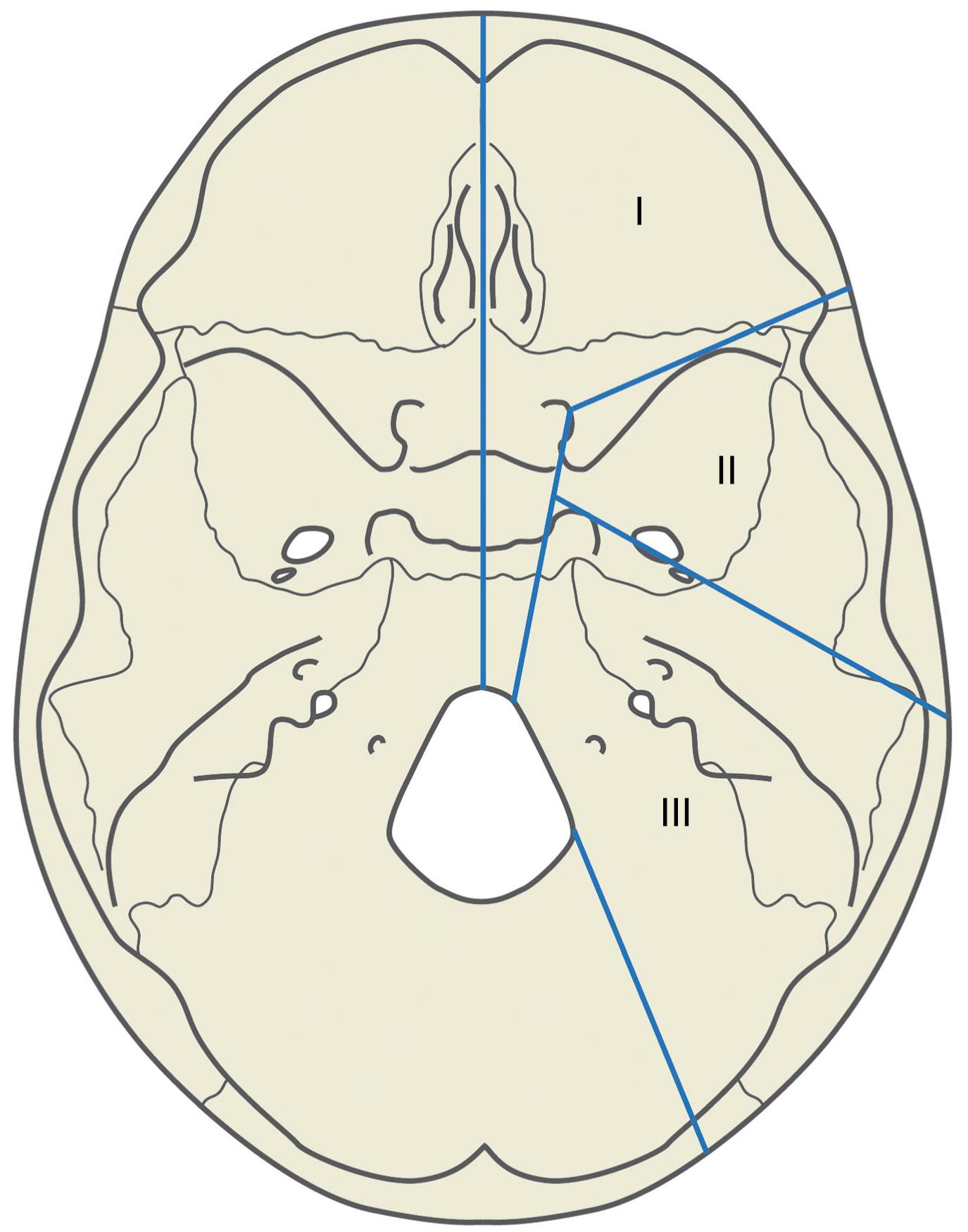Physical Address
304 North Cardinal St.
Dorchester Center, MA 02124
The skull base is a complex anatomic region through which the major blood vessels of the head and neck, cranial nerves, and spinal cord pass. A variety of congenital malformations and neoplasms can involve the skull base. As surgical techniques, instrumentation, and imaging technology have improved over recent years, many skull base lesions can now safely be resected using an endonasal approach, thus minimizing morbidity and obviating the need for extensive reconstruction. However, many lesions still require an open resection in order to achieve clear margins. Reconstructive plastic surgeons thus play a major role in reconstructing the functional, anatomic, and cosmetic defects that such skull base resections often create.
The goals of skull base reconstruction include sealing dural leaks, dead space obliteration, separating the aerodigestive tract from the intracranial space, protecting the brain, and restoring cranial nerve function and appearance. Historically, reconstructive efforts were limited to skin grafts, pedicled flaps, and staged tubed flaps; such reconstructions were plagued by a variety of wound healing complications and significant cosmetic deformity. As such, skull base resections were associated with poor outcomes.
As is true for many aspects of reconstructive surgery, the advent of microsurgery brought about development of the tools necessary to reliably improve the cosmetic and functional results associated with skull base resections. Presently, microvascular techniques are considered the gold standard for most skull base reconstructions, providing the means to transfer well-vascularized tissue wherever needed, thereby allowing for a watertight, durable partition between the central nervous system and external environment. In many cases, advances in reconstruction now permit treatment of lesions that were deemed unresectable in the past due to the morbidity associated with their removal.
The skull base separates the extracranial and intracranial anatomy. Located on the extracranial side of the skull base are the sphenoid sinuses, ethmoid sinuses, pterygopalatine fossae, infratemporal fossae, and orbits. On the intracranial side, the skull base forms the anterior, middle, and posterior fossae. Multiple classification systems have been introduced based on anatomic boundaries, pathology, and reconstructive requirements. The Irish classification system has emerged as the most popular, due to its simplicity and clinical utility. Irish and colleagues reviewed 77 cases and divided the skull base into three regions, based on the relationship of the tumor to the anterior, middle, and posterior cranial fossae ( Fig. 27.1 ). In this classification, resections can involve removal of skull base bone with or without removal of the underlying dura.

Region I defects typically involve or arise from structures that abut the anterior cranial fossa, including the orbits and orbital contents, the nose, the paranasal sinuses, and the cribriform plate. The posterior boundary of Region I includes the clivus and foramen magnum, as tumors in this region are also approached anteriorly. We have further subdivided Region I into midline and lateral or paramedian regions. Midline Region I tumors often originate from the ethmoid and sphenoid sinuses or the cribriform plate. These include esthesioneuroblastomas, for example. Lateral Region I tumors include those that arise from the orbit or periorbital structures, such as lacrimal gland tumors.
Region II extends from the posterior orbital wall to the petrous portion of the temporal bone. Region II defects result from tumors originating from the lateral skull base, primarily the infratemporal and pterygopalatine fossae, which can extend into the middle cranial fossa. Tumors that originate in this region include nasopharyngeal carcinomas, glomus jugulare tumors, sphenoid wing meningiomas, and clival chordomas, as well as parotid tumors that become deeply infiltrative and maxillary or cheek neoplasms with posterior spread. The latter usually occurs via the maxillary division of the trigeminal nerve (V 2 ).
Region III defects are usually associated with tumors arising from the ear, parotid, or temporal bone, and may extend intracranially into the middle or posterior cranial fossae. Region III tumors include cutaneous tumors involving the external auditory canal, such as squamous and basal cell carcinomas, as well as parotid malignancies and, occasionally, sarcomas that arise directly from the temporal bone.
Become a Clinical Tree membership for Full access and enjoy Unlimited articles
If you are a member. Log in here